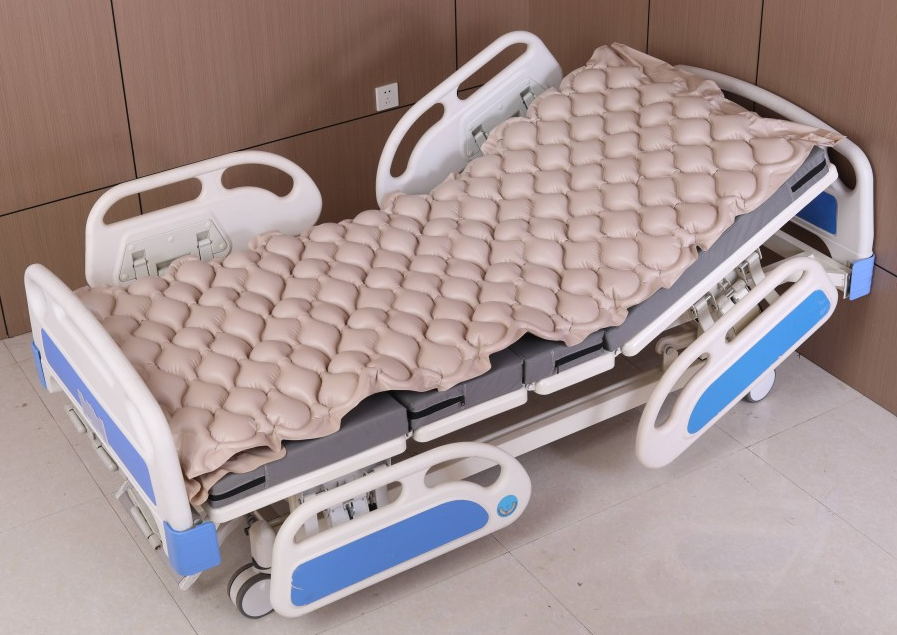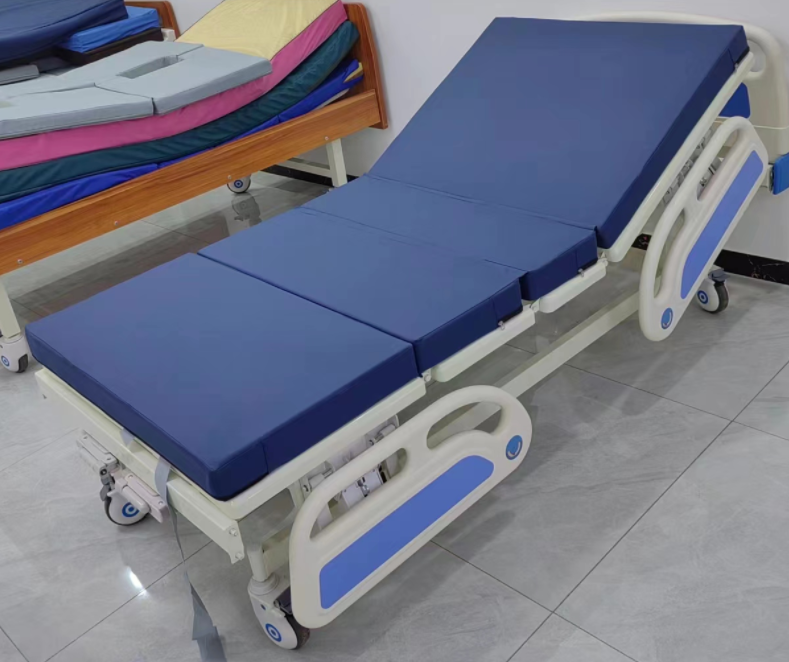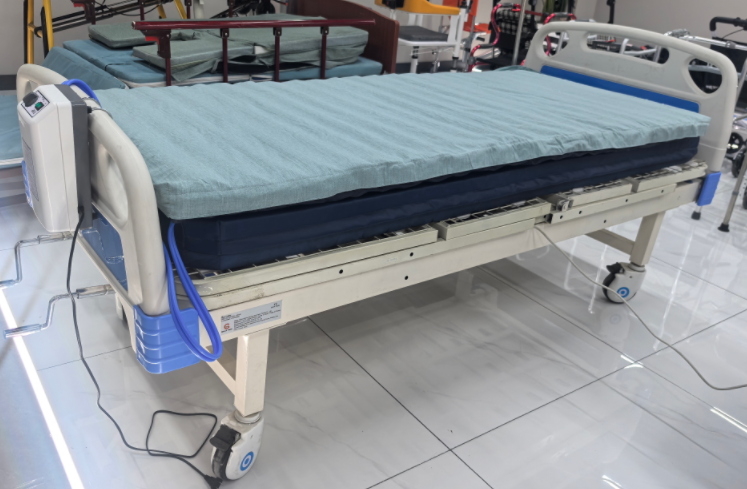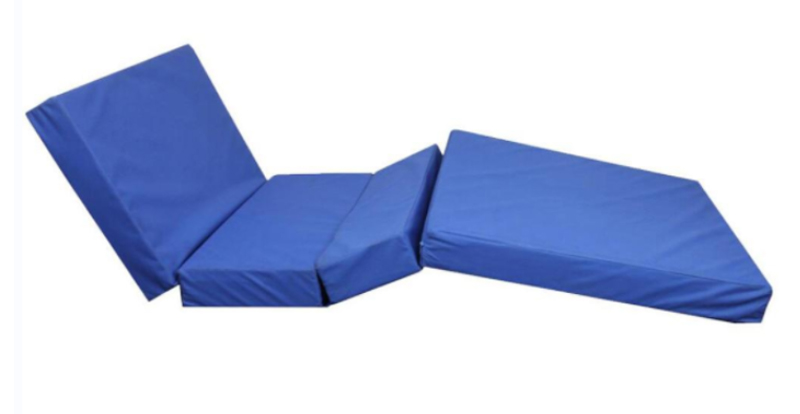Introduction
I believe picking the best medical bed mattress is very important. It helps patients feel comfortable and supported. It also helps prevent pressure injuries. This is essential for people who stay in bed for over 12 hours each day. Medical bed mattresses are different from regular ones. They are made with special features. These features include pressure relief, infection control, and greater strength, designed for healthcare settings.
Choosing the Right Medical Bed Mattress: What I Look For
If you’re picking a best medical bed mattress, I think some things are really important for a patient’s comfort, safety, and their health in the long run. Here’s what I suggest you think about:
How the Medical Bed Mattress Handles Pressure and Gives Support
Spreading Pressure: I recommend looking for medical bed mattresses that spread out pressure well. Options that allow the body to sink in slightly and cushion it effectively can lessen the stress on body parts that are at high risk for sores. This is very important to help stop pressure injuries. I know this is key if a patient needs to stay in bed for many hours.

Firmness and Support: I find that the right firmness helps keep the spine straight and supports the body’s natural curves. You want to avoid mattresses that are too firm or too soft. I’d choose a model that finds a good balance between support and comfort. This approach helps reduce pressure points and I believe it promotes better rest.

Keeping Cool and Dry
Controlling Temperature: From my experience, cooling features like gel-infused layers or covers that wick away moisture help manage heat build-up. A mattress that keeps the patient dry and cool is very important to help prevent skin irritation or infection. I’ve seen that patients who tend to overheat or sweat a lot often feel better with advanced gel or air-flow designs.
Moving Around and Transfers
Stable Edges: I’ve noticed that for patients who need to move frequently or need assistance from caregivers, mattresses with stable, firm edges make getting in and out of bed safer. This also reduces the chance of falls. In my opinion, it also makes transfers easier for both patients and their caregivers.
Keeping it Clean and Fighting Germs
Easy Cleaning: I suggest you look for medical bed mattresses that have covers you can remove and wash in a machine. They should also be able to handle incontinence and you should be able to clean them using standard infection control methods. Simple cleaning processes help keep a healthier environment for the patient. Based on my observations, this also helps the mattress last longer.

Thinking About Specific Health Needs
Health Issues and Risk: I always recommend matching the mattress type to the patient’s specific conditions. For instance, if someone is at high risk for pressure ulcers, I would suggest they use alternating pressure mattresses or foam prevention mattresses. Patients with spinal injuries or those who have limited mobility for long periods need options that address their unique risks. Sometimes, this means they may need mattresses with specialized support or particular heat-control features.
Cost, How Long it Lasts, and Overall Value
Price and Long-Term Use: I think it’s wise to consider the initial cost compared to its long-term value. Foam and innerspring models usually cost less and provide basic care. On the other hand, advanced air, gel, and hybrid mattresses are more of an investment but, from my experience, they offer superior pressure care and last longer. I find these are very suitable for situations where patients need ongoing, chronic care.
My Quick Tips for Deciding
I suggest you evaluate how long and how often the patient will be in bed.
I recommend you check the medical bed mattress specifications for its weight capacity. Also, look for special features like anti-slip sides or waterproof covers, as these can be very helpful.
I always advise consulting with healthcare professionals. They can help you match the patient’s medical needs with the appropriate mattress technology.
My advice is to balance your budget with the features you absolutely need. If the patient is at high risk for complications, I believe prioritizing pressure care and infection control is the best course of action.
From my perspective, if you focus on these key factors—like pressure relief, firmness, heat management, mobility, hygiene, the patient’s specific needs, and value—you can choose a medical bed mattress. I believe this careful choice can make a real difference in improving patient outcomes and also make the everyday routines for caregivers easier.
Thinking About Special Patient Needs for Best Medical Bed Mattresses
When you choose a best medical bed mattress, I think it’s very important to match its features with what the patient needs. Let’s look at some common patient situations and the mattress types I recommend for them.
Medical Bed Mattress Types by Patient Need
| Patient Need | Recommended Mattress Type | Key Features |
|---|---|---|
| Patient moves very little/Has nerve issues | I suggest: Alternating pressure or Low air loss | Features: Automatic pressure adjustments, good airflow |
| High chance of getting pressure sores | I recommend: Gel-infused or Alternating pressure | Features: Best pressure relief, handles moisture |
| Post-surgical recovery | Multi-layer foam or gel | Stable support, comfort, easy repositioning |
| Breathing problems (like COPD, sleep apnea) | I suggest: Adjustable, firm, breathable foam | Features: Can raise head, controls temperature |
| Stays in bed long-term/Needs ongoing care | I recommend: Hybrid or Air mattresses | Features: Lasts long, great support, simple to clean |
Key Point:
Picking the best medical bed mattress based on what a patient specifically needs can greatly impact their comfort. I believe it also helps prevent other health issues and makes care run more smoothly. I always recommend checking clinical guidelines. Then, match the mattress technology to what each person uniquely needs.
Common Questions About Medical Bed Mattresses
What Is the Typical Cost of a Medical Bed Mattress?
I find medical bed mattresses might range from a few hundred to several thousand dollars. The price varies with the type, features, and materials. Pressure-relief and high-tech models are pricier than basic foam options. Mattresses designed to prevent pressure sores often cost more. I believe these provide superior support and more focused care.
Are Mattresses Included With Hospital Beds?
From what I see, most hospital beds don’t include a mattress. You will likely need to buy the mattress by itself. So, I recommend you confirm this with the supplier before you order.
Are Medical Bed Mattresses Safe?
Yes, I consider them safe if you follow safety guidelines. The FDA provides clear guidelines on hospital bed system dimensions. These guidelines help lower the risk of entrapment. There are established limits for gap sizes between the mattress and the bed frame. I also recommend regular safety inspections. This is vital for patients who might be at a higher risk.
What Types of Hospital Bed Mattresses Are Available, and Who Are They For?
Foam Mattresses: I find these offer good general support. They are best for patients with a low to moderate risk.
Alternating Pressure or Low-Air-Loss Mattresses: I recommend these for users at high risk of developing pressure ulcers. These mattresses assist with pressure relief and improve airflow.
Luxury Comfort Mattresses: These are crafted with top-quality materials. Examples include hand-laid pocket springs and layers of wool or cotton. These mattresses might include long warranties, sometimes up to 15 years. I see them as geared towards high comfort for long-term care needs.
How Often Should I Inspect or Replace Medical Bed Mattresses?
I believe it’s vital to inspect medical mattresses routinely. You should replace them if they are worn out or damaged. With time, mattresses no longer provide the same support and protection. This lack of support can raise the risk of pressure injuries and infections for those using them.
Are There Specific Weight Capacities and Size Options?
Yes. From my knowledge, manufacturers make hospital beds and mattresses in many sizes. They also have different weight limits to suit each patient. I strongly advise you to always check the mattress details. This ensures it fits the patient’s weight and size.
Why Can’t I Use a Standard Home Mattress on a Hospital Bed?
I’ve observed that a regular home mattress won’t bend correctly with an adjustable hospital bed frame. It also doesn’t offer the needed support or pressure-relief capabilities. Medical bed mattresses are designed to function with hospital beds. They help protect against pressure sores. These mattresses move with the bed’s adjustments. I believe they provide better and safer support for patients who are in bed for long periods.

